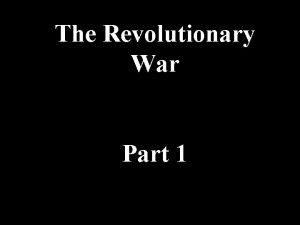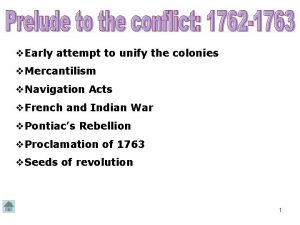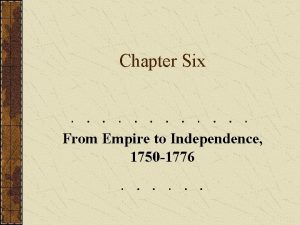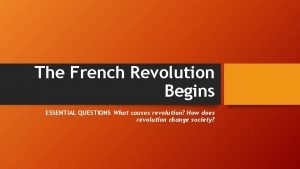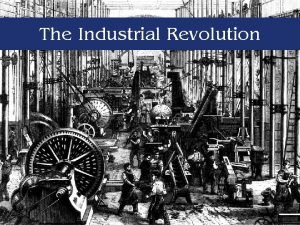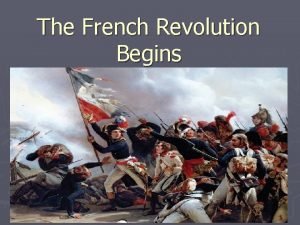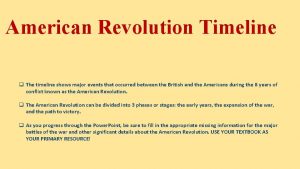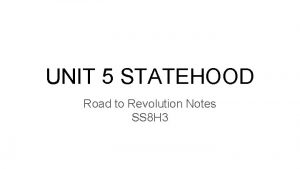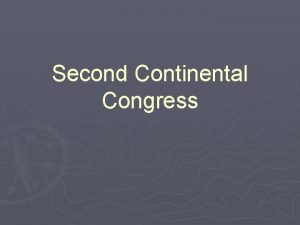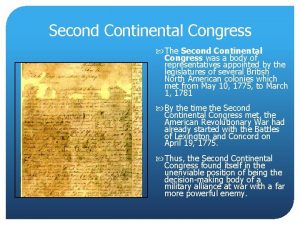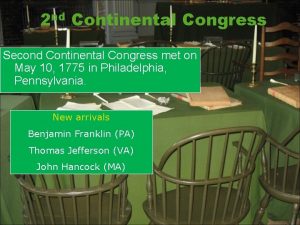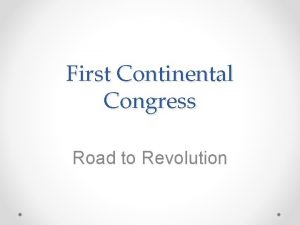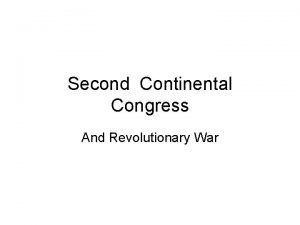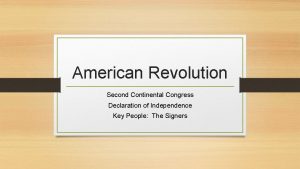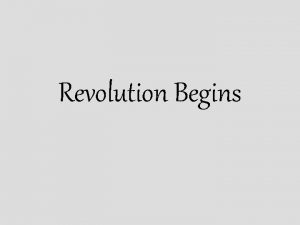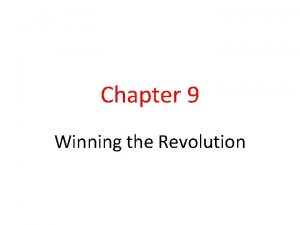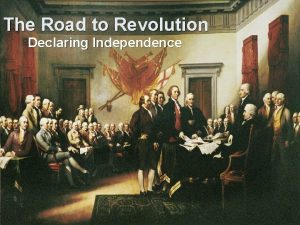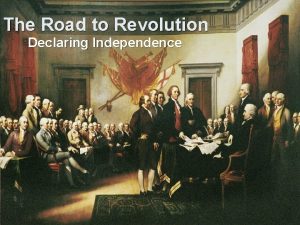SECOND CONTINENTAL CONGRESS Road to Revolution ESSENTIAL STANDARDS













- Slides: 13

SECOND CONTINENTAL CONGRESS Road to Revolution

ESSENTIAL STANDARDS q 8. H. 1. 2 ‐ Summarize the literal meaning of historical documents in order to establish context. q • 8. H. 1. 3 ‐ Use primary and secondary sources to interpret various historical perspectives. q • 8. H. 1. 4 ‐ Use historical inquiry to evaluate the validity of sources used to construct historical narratives (e. g. formulate historical questions, gather data from a variety of sources, evaluate and interpret data and support interpretations with historical evidence). q • 8. H. 1. 5 ‐ Analyze the relationship between historical context and decision‐making.

LEARNING TARGET I can explain the role and purpose of the Second Continental Congress.

BELL RINGER What do you see? What appears to be happening in this image? In your opinion, who is winning this struggle? How do you think this situation will end?

FIRST CONTINENTAL CONGRESS RECAP 1. Colonists did not just respond to the Intolerable Acts with art and political cartoons. They also took a large step in establishing the First Continental Congress, due to the growing colonial concern regarding British tyranny (unjust use of power. ) 2. Delegates from twelve of the thirteen colonies (Georgia did not send representatives) met on September 5, 1774 at Carpenters’ Hall in Philadelphia to discuss their concerns regarding what they felt were unfair taxation policies and laws, such as the Coercive Acts/Intolerable Acts.

FIRST CONTINENTAL CONGRESS RECAP 1. North Carolina representatives Richard Caswell, William Hooper, and Joseph Hewes attended the First Continental Congress where the 56 men in attendance considered options such as an economic boycott of British trade, published a list of rights and grievances, and petitioned King George for redress of those grievances. 2. The Congress also called for another Continental Congress in the event that their petition was unsuccessful in halting enforcement of the Intolerable Acts.

ASSESSMENT PROMPT How do you predict King George responded to the petition noting colonists’ grievances?

THE SECOND CONTINENTAL CONGRESS Read the Study Guide 5. 4 and answer the questions. Find an example of the strands represented in the reading and color code the strand. (see the board for the proper color to code. Complete the web diagram. Write down in a list three things you learned.

ASSESSMENT PROMPT List three things the Second Continental Congress accomplished.

ASSESSMENT PROMPT What was the goal of the Olive Branch Petition?

NORTH CAROLINA'S ROAD TO INDEPENDENCE • Read the handout on North Carolina’s Road to Independence. • Place your answers in your portfolio. • Do not write on the handout.

ASSESSMENT PROMPT What group made up the largest number of loyalists during the American Revolutionary War?

LESSON CLOSURE v. Complete the lesson closure handout. v. You may write on the handout.
 Plate boundaries types
Plate boundaries types Oceanic oceanic convergent boundaries
Oceanic oceanic convergent boundaries First continental congress convenes
First continental congress convenes First continental congress
First continental congress What was the goal of the first continental congress?
What was the goal of the first continental congress? First continental congress convenes
First continental congress convenes The first continental congress
The first continental congress Plamatic acid
Plamatic acid Paved road vs unpaved road
Paved road vs unpaved road French revolution essential questions
French revolution essential questions Industrial revolution essential questions
Industrial revolution essential questions French revolution essential questions
French revolution essential questions Road to american revolution timeline
Road to american revolution timeline Road to revolution cloze notes 1
Road to revolution cloze notes 1


